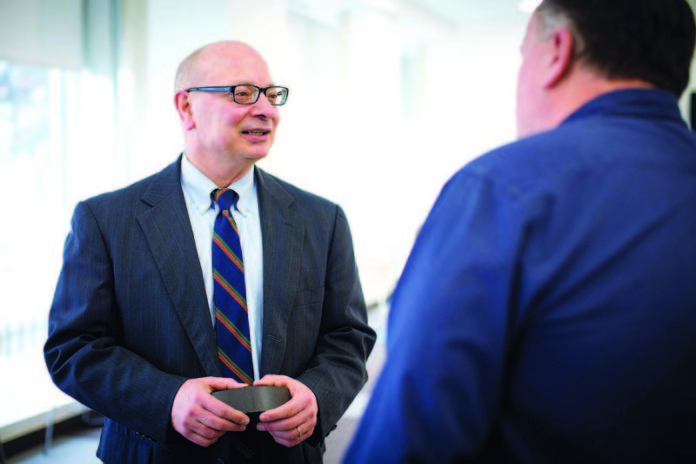
Dr. Gus Manocchia | Blue Cross & Blue Shield of Rhode Island, chief medical officer
The chief medical officer at Blue Cross & Blue Shield of Rhode Island, Dr. Gus Manocchia, believes that when patients pose multiple questions regarding health concerns to their primary care physician, most don’t get answered.
He said that’s because the questions don’t fit in the span of the typical 30-minute appointment and the questions aren’t related to that doctor’s medical specialty.
Manocchia has been instrumental in driving the conversion of medical practices from the old, scattered fee-for-service model to one that puts the patient at the center of the health care system. Known as patient-centered medical homes, primary care physicians lead a team that uses electronic health records and constant communication to coordinate care, both preventive and reactive, with the goal of removing unnecessary and wasteful care while improving a patient’s health.
The former primary care physician says that out of approximately 850 old-style practices in Rhode Island, half of them are under a patient-centered medical home system as of 2017.
“A patient gets, on average, 30 minutes, six times a year with his or her PCP,” he said. “But what of those months in between? Follow-up calls are made [by a PCMH] to reach out to the patient in between and ask how he or she is doing. The care quality is better. Data supports that. Costs go down because efficiency of care is going up.”
Under a PCMH system, he said, a nurse is right there for a patient’s other needs, including patient education, outreach after the appointment, nutritional concerns, even behavioral health concerns. It’s all part of what Manocchia called “a concierge of service” that works together to make sure everything a patient needs happens.
Blue Cross CEO and President Kim Keck, who nominated him for the award, elaborated: “Under his direction, Blue Cross has worked with nearly 140 primary care practices to transition to the PCMH model. This has included supporting more than 400 physicians across 131 practices to implement electronic health records. Gus has also worked with 300 primary care providers across 96 practices to promote use of the statewide health information exchange.”
She said the insurer recently studied claim data for both commercial and Medicare members at PCMH practices from the past five years. The results reveal a startling number of quality improvements, including: a 14 percent reduction in inpatient admissions across the commercial populations; an 18 percent reduction in avoidable emergency-department visits for Medicare members; and widespread improvement in cancer-screening rates, including a 20 percent higher rate of screening for breast cancer.
“He is committed not only to effecting change in the entire health care delivery system statewide, but also to making a difference in the life of each individual patient he sees,” Keck said.
Manocchia’s other goal at Blue Cross has been changing the old health insurance model of measuring the amount of “care delivery.” This measurement system encourages the physician to see more and more patients to increase the number of patients served, even though it results in less and less quality care as the doctor tries harder to see enough patients rather than taking the quality time to help them. Manocchia has helped providers move, instead, to an “outcome-based” system that focuses on rewarding outcomes and pro-active care that keeps a patient from an expensive hospital stay.
“I was a PCP for 10 years, and thought I was doing well with my 2,000 patients,” he said. “After a while I realized I could affect an entire state of patients and their health care. And I saw a lot of issues with health care services. A lack of coordination. That’s why I left PCP practice: The bigger effect I could have in another way. I didn’t like that it wasted money for providing services that added little value. I wanted to fix that problem.”












